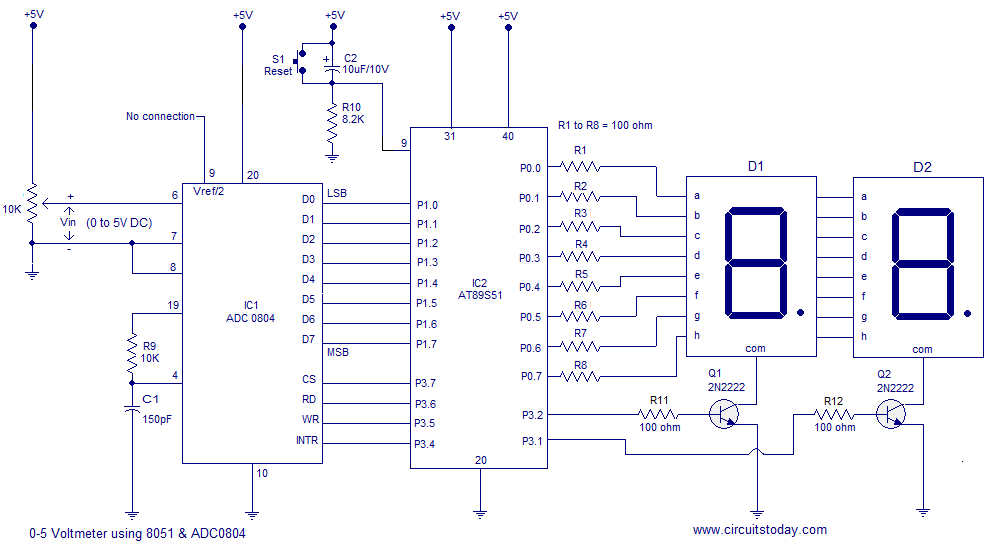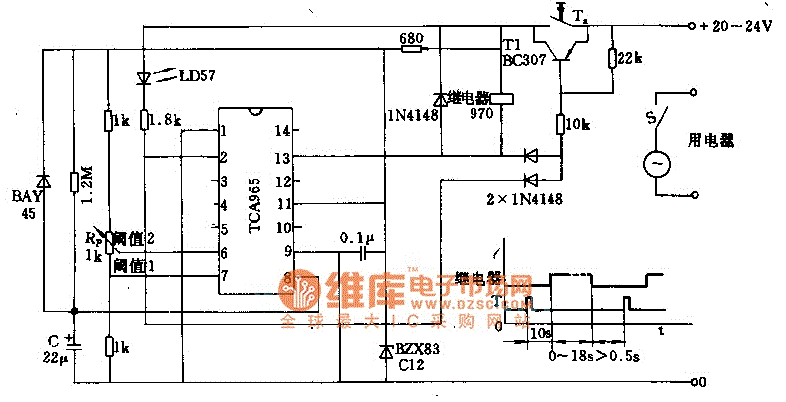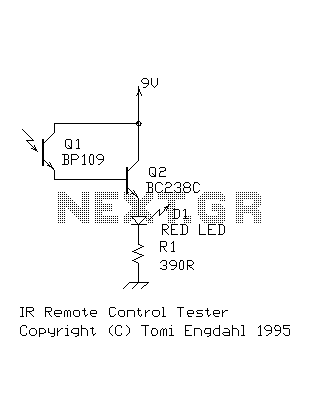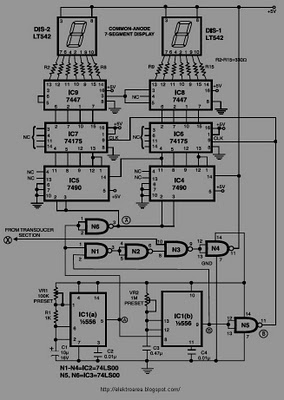
Digital voltmeter using 8051 microcontroller AT89S51 with circuit diagram and software

A simple 0-5 digital voltmeter utilizing the 8051 (AT89S51 microcontroller) is presented, accompanied by a circuit diagram and assembly language (ASM) code. This digital voltmeter is designed for straightforward voltage measurement.
The circuit employs an AT89S51 microcontroller, which serves as the core processing unit. The input voltage range is from 0 to 5 volts, making it suitable for various low-voltage applications. The microcontroller interfaces with an Analog-to-Digital Converter (ADC), which converts the analog voltage signal into a digital format that the microcontroller can process.
In the schematic, the ADC is connected to one of the microcontroller's input pins. The microcontroller reads the digital value from the ADC and processes it to display the corresponding voltage on a 7-segment display or an LCD. The use of a resistor divider may be necessary if the input voltage exceeds the 5V limit, ensuring the voltage remains within the ADC's operational range.
The assembly language code is responsible for initializing the microcontroller, configuring the ADC, reading the digital output, and managing the display output. The code includes routines for converting the ADC value into a voltage representation and controlling the display to show the measured voltage.
This design highlights the integration of microcontroller technology with basic electronic components to create an efficient and effective digital voltmeter suitable for educational purposes or simple measurement tasks.Simple 0-5 digital voltmeter using 8051 (AT89S51 microcontroller) with circuit diagram and assembly language ASM code. Simple digital voltmeter.. 🔗 External reference
The circuit employs an AT89S51 microcontroller, which serves as the core processing unit. The input voltage range is from 0 to 5 volts, making it suitable for various low-voltage applications. The microcontroller interfaces with an Analog-to-Digital Converter (ADC), which converts the analog voltage signal into a digital format that the microcontroller can process.
In the schematic, the ADC is connected to one of the microcontroller's input pins. The microcontroller reads the digital value from the ADC and processes it to display the corresponding voltage on a 7-segment display or an LCD. The use of a resistor divider may be necessary if the input voltage exceeds the 5V limit, ensuring the voltage remains within the ADC's operational range.
The assembly language code is responsible for initializing the microcontroller, configuring the ADC, reading the digital output, and managing the display output. The code includes routines for converting the ADC value into a voltage representation and controlling the display to show the measured voltage.
This design highlights the integration of microcontroller technology with basic electronic components to create an efficient and effective digital voltmeter suitable for educational purposes or simple measurement tasks.Simple 0-5 digital voltmeter using 8051 (AT89S51 microcontroller) with circuit diagram and assembly language ASM code. Simple digital voltmeter.. 🔗 External reference





